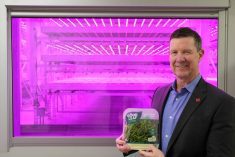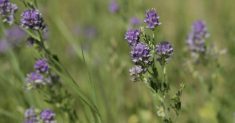SOUTHWEST REGION
Spotty thundershowers over the past week brought varied rainfall ranging from 10 to 60 mm, with reports of severe weather in Hamiota, Cardale, Newdale and Reston.
In general, warm weather and humidity over the past week, let the crop advance and improve. Producers are working on weed control.
Crop quality varies a great deal with several crops still showing extreme moisture stress and now starting to show diseases. Producers continue to seed greenfeed and control weeds in fields that have not been planted. Some producers have started to cut tame hay and crop looks average to above average.
Read Also

Manitoba sclerotinia picture mixed for 2025
Variations in weather and crop development in this year’s Manitoba canola fields make blanket sclerotinia outlooks hard to pin down
Concerns around getting good quality as wet ground and weather is not great for curing. Pastures are improving. However some permanent damage has been done to some forage stands.
NORTHWEST REGION
Seasonal temperatures with some mid-week light localized showers, occasional windy periods and several days with higher humidity. The favourable conditions are promoting good crop development. Variable crop staging characterizes the eastern section of the region.
In response to excess moisture stress, premature bolting of canola is evident under the early-season high field moisture conditions. Crop drown-outs and yellowing due to impacts of excess moisture and nutrient losses are increasingly visible.
Producers continue to seed greenfeed. Diamondback moth trap counts have increased.
Favourable weather and forage development has allowed increased haying operations to proceed. Reported yields are averaging 2.5 tonnes.
CENTRAL REGION
Warm, humid weather during the week provided for good growing conditions and rapid crop growth. Minimal rainfall occurred later in the week, mostly in western areas and ranged from seven to 15 mm. Crop staging varies greatly with crops planted late into wet soils, emerging erratically and showing signs of yellowing from excess moisture stress. Fungicides to suppress fusarium head blight are being applied.
Later planted, broadcast-seeded canola has emerged relatively well in situations where harrowing was performed to surface incorporate the seed.
Herbicide applications continue as producers and custom applicators continue to deal with the difficult field conditions. Some challenges facing them are varying crop stages and irregularly seeded fields left with unseeded portions. Some herbicides have been aerial applied.
Leaf diseases are noticeable on cereal crops and fungicide applications are occurring.
Heat-loving crops like beans, corn and sunflower are progressing well, but their development remains behind normal. Hay making is difficult due to the higher moisture conditions. Reported yields are in the normal range at 1.5 to 2.0 T/a.
Pasture growth is keeping up to grazing. In some, the soft ground is not suitable for grazing cattle. Some greenfeed is being seeded.
EASTERN REGION
Intense isolated thunderstorms rolled through central and north-central districts of the region Sunday night dropping five to 10+ mm of rapid rainfall.
Fungicide applications for sclerotinia have begun.
Both oats and late-seeded canola are showing damage symptoms due to excess moisture. Winter wheat crop conditions were still rated as good across the region. Some fields were flowering and receiving fungicide treatments for fusarium head blight.
Hayfield conditions ranged from fair to good across the region. Quality was noted as below average due to some cutting occurring later than preferred. Drying conditions have been poor. Pasture land conditions were rated as good.
INTERLAKE REGION
Warm and dry conditions through the week allowed for rapid crop growth. Scattered showers brought slight amounts of rain across the region. Crop staging is variable due to the wide range of planting dates.
Herbicide applications continue with green foxtail prevalent due to warm, dry conditions.
Insecticide applications are occurring on alfalfa seed crops as insect activity is high due to warm temperatures. Alfalfa seed weevil is present at economic thresholds on many fields. Leafcutter bee release is general. Tame forage harvesting is occurring across the region with yields above average.
Dry conditions have allowed for dry baling to occur. Field conditions are improving and producers are reporting complete coverage of some fields. This has not been possible on many fields for the past three haying seasons.
Pastures are in decent condition where excess moisture is receding. Flooded areas will continue to be troublesome as cattle will only graze higher land and resist crossing flooded areas. Biting insects are intense and causing crowding of cattle during daytime, thus reducing pasture gains.


















